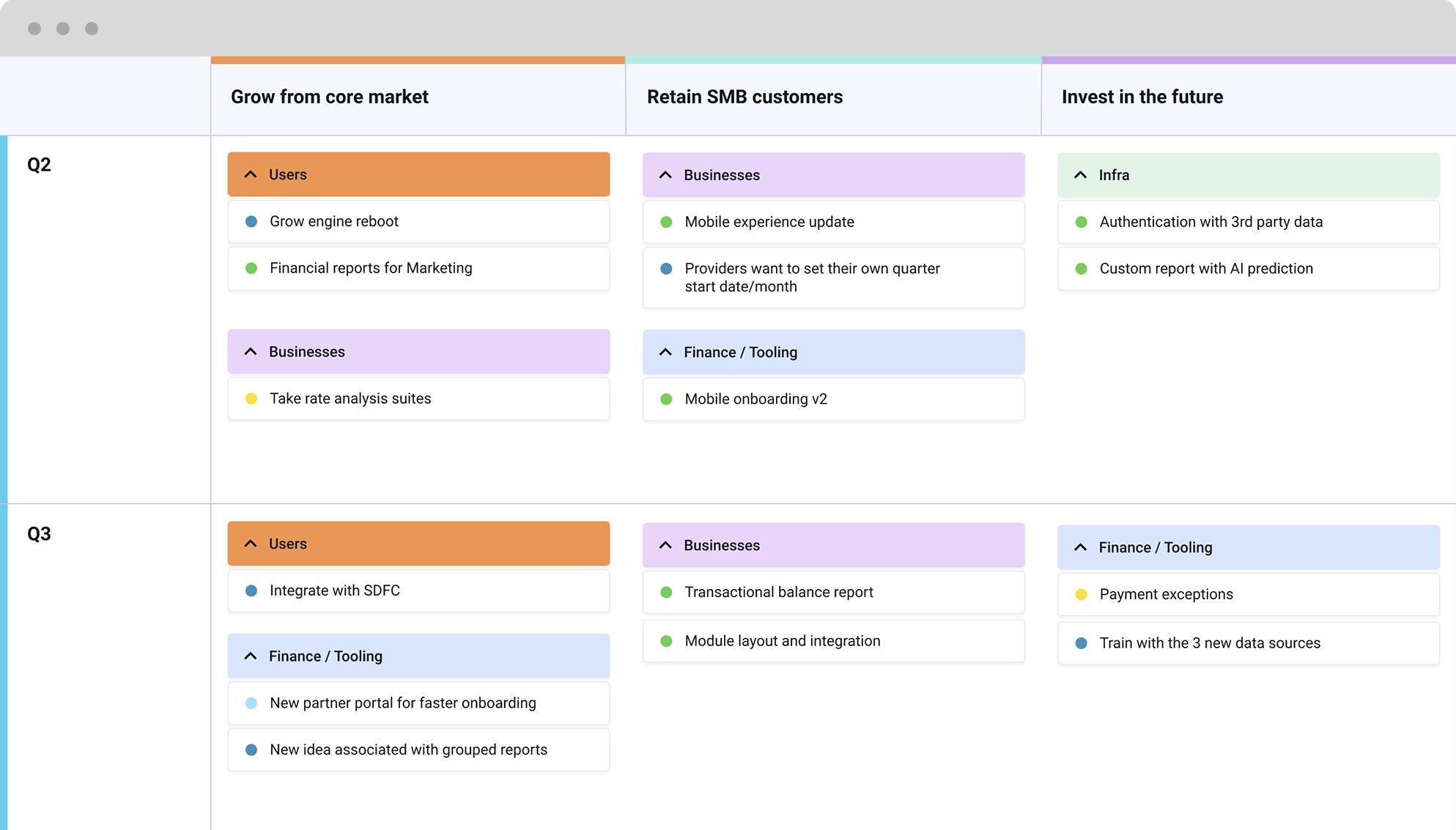Quarterly Planning: How Product Teams Align Strategy with Execution
Quarterly planning is a critical process for product organizations, bridging long-term strategy with short-term execution. Also known as quarterly alignment, this structured approach ensures that product teams focus on specific, measurable outcomes—often defined through OKRs (Objectives and Key Results). Effective quarterly planning reduces development waste, aligns cross-functional teams, and accelerates product delivery and business growth. By setting clear priorities and ensuring teams move in the same direction, organizations can drive execution with clarity and efficiency.
For Chief Product Officers (CPOs), Product Operations Leaders, and Portfolio Management Executives, it is the framework that connects strategy to execution. It helps break down large, overarching goals into actionable items and ensures alignment across product, engineering, marketing, and other cross-functional teams. This process helps product leaders set clear priorities, eliminate distractions, and drive measurable results throughout the quarter.
What is Quarterly Planning?
Quarterly planning is a systematic approach to setting priorities, allocating resources, and determining the next phase of focus for a product organization. It typically occurs at the start of each quarter and serves as the basis for aligning the company’s product and business strategies with actionable initiatives.
The goal is to ensure that product teams are working on the most important initiatives and that these efforts are aligned with the company’s broader business objectives. This is often done by connecting high-level OKRs (Objectives and Key Results) to specific, measurable tasks and deliverables.
Key Components of Quarterly Planning
- Aligning on Objectives: During the planning process, product leaders and teams establish clear objectives for the quarter. These objectives should align with company-wide strategic goals and focus on driving meaningful outcomes. For example, objectives might include increasing customer retention, launching new features, entering new markets, or improving product usability. To effectively set and manage these objectives, explore our insights on Aligning Product OKRs to Outcome-Focused Roadmaps.
- Setting Key Results: Once the objectives are defined, teams identify key results—specific, measurable milestones that will demonstrate progress toward achieving the objective. Key results help ensure that progress is quantifiable and allow teams to adjust course if needed throughout the quarter.
- Resource Allocation and Prioritization: Effective quarterly planning ensures that the right resources—whether that be budget, engineering capacity, or product focus—are aligned with the most critical initiatives. Product leaders use this process to prioritize the most impactful projects.
- Cross-Functional Alignment: One of the most important elements of quarterly planning is ensuring that all teams, including engineering, marketing, sales, and customer success, are aligned with the product team’s focus. By involving key stakeholders in the planning process, organizations ensure that everyone is working towards the same strategic goals, which reduces the risk of miscommunication or wasted effort.
- Identifying Dependencies and Risks: During this process, product leaders assess potential risks and dependencies that could impact the execution of their objectives. Identifying these risks early allows teams to have trade-off discussions, and proactively address challenges to make the quarter’s execution more predictable.
Why is Quarterly Planning Important?
Quarterly planning is essential for several reasons:
- Clear Focus: By defining specific objectives for each quarter, product teams have a clear direction for what needs to be achieved. This focus ensures that resources are spent on high-impact projects and that teams are not pulled in multiple directions.
- Alignment with Business Goals: It connects product work with the broader company strategy. By using OKRs, product leaders can ensure that their team’s efforts align with business goals and that product initiatives contribute to overall company success.
- Adaptability: The world of product management is fast-paced, and priorities can shift quickly. Quarterly planning ensures that product teams remain agile, regularly reassessing goals and adjusting as needed based on market changes, customer feedback, or new business priorities.
- Improved Efficiency: When teams are aligned and focused on specific goals, they can execute more efficiently, reducing delays, miscommunications, and development waste. This process helps provide structure and guidance to ensure that product teams are always working toward measurable, impactful results.
- Transparency and Accountability: With clear objectives and key results in place, quarterly planning establishes a framework for accountability. Product teams can track progress against their goals, ensuring transparency and the ability to course-correct if things aren’t going as planned.
Quarterly Planning in Action: Best Practices
Here are some best practices to help product teams make the most of quarterly planning:
- Involve the Right Stakeholders: Ensure that product, engineering, marketing, and other key teams are involved in the planning process. This fosters cross-functional collaboration and ensures that everyone is aligned on what needs to be done.
- Use Data-Driven Insights: Leverage data to inform decision-making during quarterly planning. This includes using customer feedback, product analytics, and market research to identify priorities and measure progress throughout the quarter.
- Keep It Simple: While quarterly planning should be thorough, it should also be agile. Focus on the key objectives that will make the most impact and avoid overwhelming the team with too many initiatives.
- Review and Iterate: Planning is not a one-time event. At the end of the quarter, take time to review what worked and what didn’t. Use these insights to improve future planning cycles and continuously evolve the process.
Conclusion
Quarterly planning is a fundamental process for ensuring that product teams remain focused, aligned, and responsive to business needs. For Chief Product Officers, Product Operations Leaders, and Portfolio Management Executives, effective planning helps drive product success by aligning teams around clear objectives and measurable results. By connecting strategic goals with execution and fostering cross-functional alignment, it ensures that product initiatives contribute directly to company growth and long-term success.
For more insights, check out Dragonboat’s additional resources:
